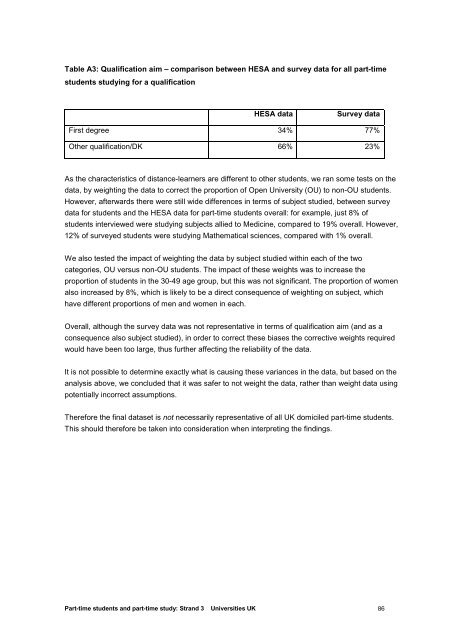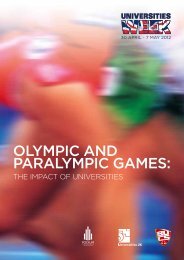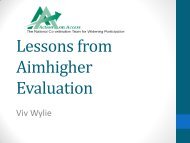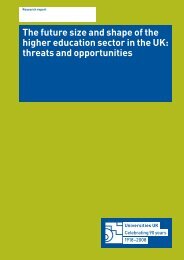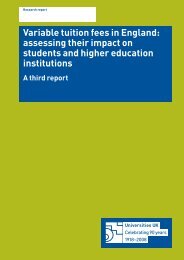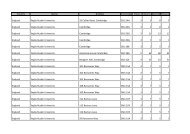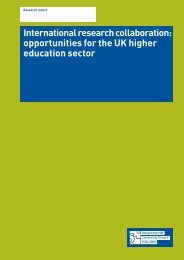Part-time Students And part-time Study In Higher ... - Universities UK
Part-time Students And part-time Study In Higher ... - Universities UK
Part-time Students And part-time Study In Higher ... - Universities UK
You also want an ePaper? Increase the reach of your titles
YUMPU automatically turns print PDFs into web optimized ePapers that Google loves.
Table A3: Qualification aim – comparison between HESA and survey data for all <strong>part</strong>-<strong>time</strong>students studying for a qualificationHESA dataSurvey dataFirst degree 34% 77%Other qualification/DK 66% 23%As the characteristics of distance-learners are different to other students, we ran some tests on thedata, by weighting the data to correct the proportion of Open University (OU) to non-OU students.However, afterwards there were still wide differences in terms of subject studied, between surveydata for students and the HESA data for <strong>part</strong>-<strong>time</strong> students overall: for example, just 8% ofstudents interviewed were studying subjects allied to Medicine, compared to 19% overall. However,12% of surveyed students were studying Mathematical sciences, compared with 1% overall.We also tested the impact of weighting the data by subject studied within each of the twocategories, OU versus non-OU students. The impact of these weights was to increase theproportion of students in the 30-49 age group, but this was not significant. The proportion of womenalso increased by 8%, which is likely to be a direct consequence of weighting on subject, whichhave different proportions of men and women in each.Overall, although the survey data was not representative in terms of qualification aim (and as aconsequence also subject studied), in order to correct these biases the corrective weights requiredwould have been too large, thus further affecting the reliability of the data.It is not possible to determine exactly what is causing these variances in the data, but based on theanalysis above, we concluded that it was safer to not weight the data, rather than weight data usingpotentially incorrect assumptions.Therefore the final dataset is not necessarily representative of all <strong>UK</strong> domiciled <strong>part</strong>-<strong>time</strong> students.This should therefore be taken into consideration when interpreting the findings.<strong>Part</strong>-<strong>time</strong> students and <strong>part</strong>-<strong>time</strong> study: Strand 3 <strong>Universities</strong> <strong>UK</strong> 86


